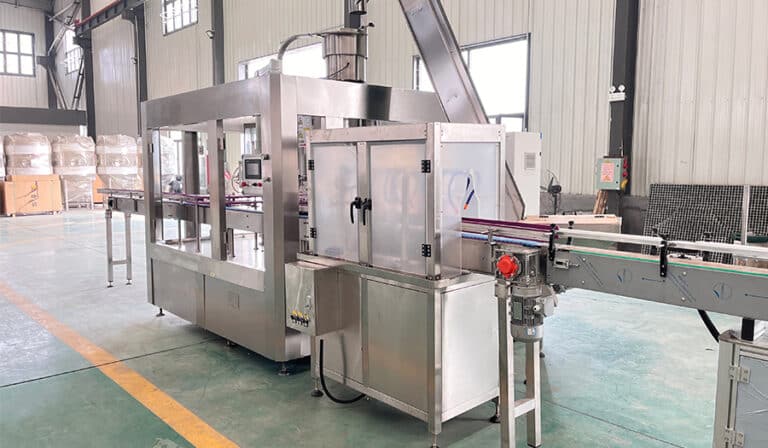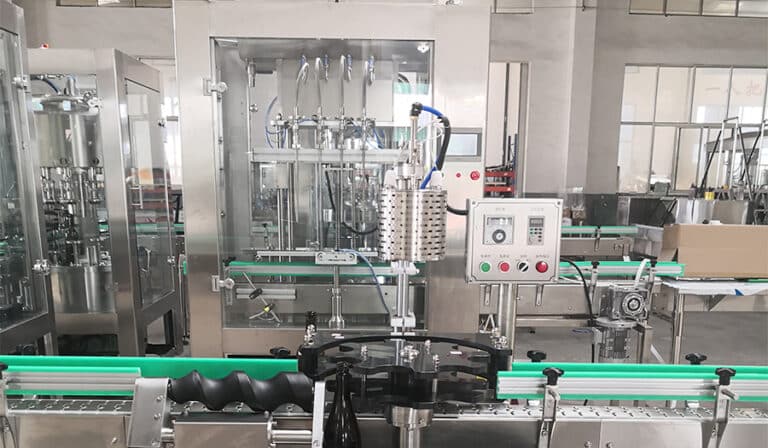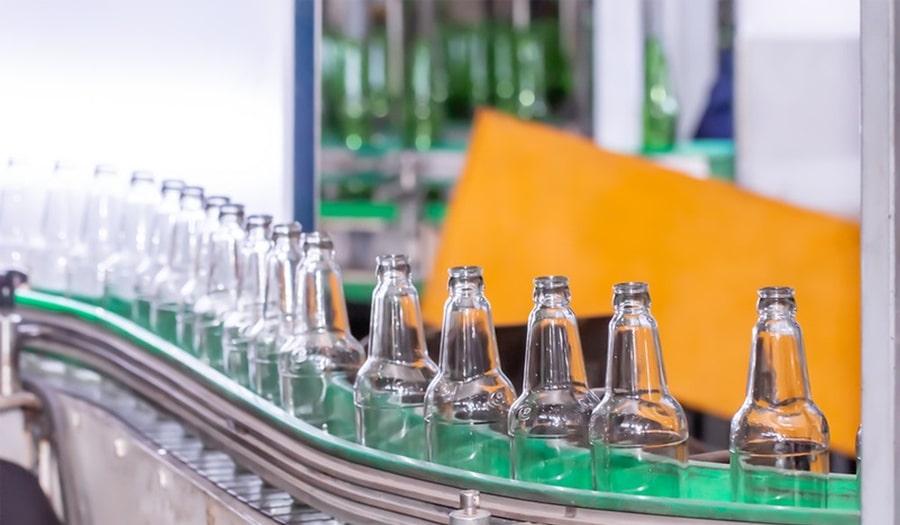At the end of the brewing process, there are several options for packaging beer. Among the most popular options are to bottle the beer or put it into kegs.Bottling is relatively simple compared to kegs and is also a cheaper option for those who are just starting. Bottling beer can be a bit time-consuming, but it is easy to do. You want to make sure that all beer bottles are free of debris and that they are sterilized like other equipment. Bottling will involve maintaining the quality and flavor of the beer. MICET will explore in detail how breweries bottle beer, providing you with all the information you need to know.
What is brewery filling?
Beer filling is the process of transferring newly brewed beer from storage tanks to containers such as bottles or cans for sale and consumption. The filling process is a key part of beer production and needs to be precise, hygienic, and fast to maintain the taste, freshness, and carbonation level of the beer. Beer filling usually uses mechanical and automated equipment, such as machines de remplissage, for the later stages of the beer production line. These machines can fill beer into containers efficiently and hygienically while ensuring the quality and safety of the product.
Types of beer filling:
- Bottled beer: beer is filled in glass bottles, plastic bottles, or aluminum bottles.
- Canned beer: beer is filled in aluminum cans or steel cans.
- Keg beer: beer is filled in beer kegs, usually used in restaurants, bars, and other places, suitable for large-volume sales.

Beer Bottling Basics
Beer bottling may seem simple, but it plays an important role in preserving the flavor and quality of your beer. The importance of beer bottling cannot be overstated, as it ensures that your hard work in the brewing process pays off with a satisfying drinking experience.
When it comes to beer bottling, details matter. From choosing the right bottle to understanding the science behind carbonation, every step in the process has an impact on the final product. Let’s take a deep dive into the world of beer bottling and explore the factors that make it an integral part of the brewing process.
Filling equipment needed for beer bottling
Beer-filling equipment types
- Gravity beer fillers: Gravity beer fillers rely on natural gravity to fill bottles or cans. They are simple in design and have a water tank above the filling station. When the container is placed under the filling nozzle, the liquid flows down and fills the container. Gravity machines are suitable for small-batch operations and are used by small or home breweries.
- Counter-pressure beer fillers: Counter-pressure beer fillers are used in large breweries and bottling plants. They use a pressurized filling process that minimizes oxidation and ensures consistent carbonation levels. These machines work by first purging the container with carbon dioxide and then pressurizing it to match the pressure in the beer storage tank. The beer is then pressed into the container to maintain its carbonation and quality.
- Isobaric beer fillers: Isobaric beer fillers are similar to counter-pressure fillers, but operate differently. They are designed to fill bottles or cans without interrupting the flow of beer. This type of machine maintains a constant pressure during the filling process, which increases productivity. Isobaric filling machines are used in high-speed bottling lines, providing efficiency and precision.
- Vacuum beer filling machines: Vacuum beer filling machines use a vacuum system to fill beer into bottles or cans. These machines work by creating a vacuum inside the container, which draws in liquid. Vacuum fillers are particularly suitable for filling glass bottles with foam or carbonated beer because they reduce foam and product waste. They are used in craft breweries and specialty beer production.
Capping machine
The capping machine is used to put bottle caps on containers containing beer to ensure a seal and is usually composed of components such as a capping head and a capping mechanism.
Convoyeur
The conveyor is used to feed empty bottles/cans into the filling machine and transport containers filled with beer to the next process. Including chain conveyors, belt conveyors, etc.
Cleaning and disinfection system
The cleaning and disinfection system is used to clean and disinfect empty bottles/cans to ensure that the containers are clean and hygienic. Usually includes spray devices, dryers, etc.

Working principle of bottle filling in a brewery
The clean bottles washed out are sent to the bottle feeding screw of the filling machine by the bottle feeding star wheel, and then to the bottle supporting cylinder of the turntable to rise. The bottle mouth is pressed on the discharge port of the filling valve under the guidance of the centering device to form a seal. After the bottle is evacuated, the back-pressure gas (CO2) in the liquid storage cylinder rushes into the bottle. When the gas pressure in the bottle is equal to the gas pressure in the liquid storage cylinder, the liquid valve is opened under the action of the liquid valve spring. At this time, the beer is automatically poured into the glass bottle along the bottle wall under the guidance of the umbrella-shaped reflection ring on the return air pipe. The CO2 in the glass bottle is replaced into the liquid storage cylinder through the return air pipe. When the beer rises to a certain height and the return air pipe mouth is closed, the beer filling automatically stops. Then close the liquid valve and gas regulator to discharge the pressure gas at the bottleneck to prevent the beer with gas from spraying out when the glass bottle descends, thus completing the entire filling process.
The Beer Bottling Process
Cleaning and Sanitizing Beer Bottles
Before bottling beer, it is vital to ensure that the bottles are clean and free of any contaminants. Cleaning involves removing any labels, debris, or residual beer from the bottles. This step is important because any residue can negatively affect the taste and quality of the beer. Sanitization is necessary to kill any remaining bacteria or wild yeast that could spoil the beer. There are several methods you can use to sanitize your bottles, such as using a sanitizing solution or boiling them in water. Implementing a thorough cleaning and sanitizing routine will greatly reduce the risk of off-flavors and infection, ensuring your beer remains fresh and flavorful.
Filling and Capping Beer Bottles
Once the bottles have been cleaned and sanitized, it’s time to pour your delicious beer into them. Using a bottling bucket or siphon, carefully pour the beer into each bottle, leaving some headspace for carbonation. This step requires precision and patience to ensure that each bottle is filled to the appropriate height. It is important to avoid overfilling, as this can cause excessive pressure and potentially cause the bottle to explode. Once filling is complete, securely seal each bottle with the closure of your choice, whether it’s a pry cap, screw cap, or cork. The type of closure you choose depends on personal preference and the type of beer you’re bottling.
Choosing the Right Beer Bottle
Having the right equipment is key to a successful beer bottling experience. Whether you’re a beginner or an experienced brewer, you’ll need some essential tools to ensure the bottling process goes smoothly. When it comes to beer bottling, precision and efficiency are crucial. The equipment you choose can have a significant impact on the final product. Let’s explore some essential and advanced tools that can elevate your beer bottling skills.

FAQ
What equipment do breweries usually use for filling?
Breweries usually use equipment such as cleaning machines, sterilization equipment, filling machines, capping machines, labeling machines, and conveying systems for filling.
Do bottles need to be treated before filling?
Yes, bottles need to be cleaned and sterilized before filling to ensure that there is no dirt and microorganisms in the bottles to ensure the hygiene of the beer.
How to keep the filled beer fresh?
Through anaerobic filling technology, the contact between beer and oxygen can be minimized to help maintain the freshness and flavor of beer.
Does the temperature of the beer filling affect the product?
Yes, the filling temperature affects the flavor and bubbles of beer. Filling at low temperatures can usually better protect the aroma and taste of beer.




